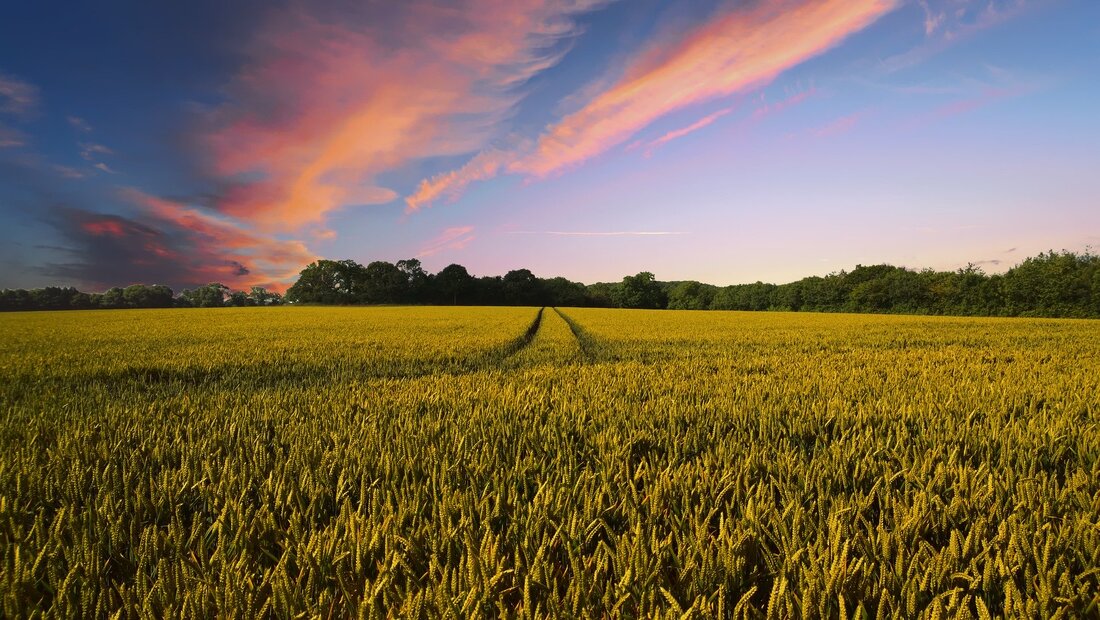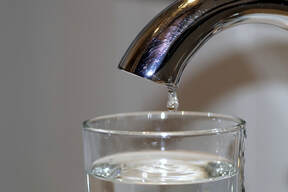 Population growth and inequitable resource distribution are intensifying the need to reduce water usage in agriculture. According to the United States Department of Agriculture, the agricultural industry accounts for 80% of the United States' water use, a number that could easily be mitigated by incorporating more sustainable methods. Reducing agricultural water use preserves natural resources, prevents unnecessary waste and improves the cost-effectiveness of cultivating various crops. Farmers who rely on water-intensive agriculture must spend thousands of dollars on infrastructure, but the benefits may not justify the investment. A sustainable solution to reduce agricultural water use goes beyond utilizing more efficient watering methods. Helping farmers build healthy soil so less water is needed is a great place to start. Incorporating cover crops to retain moisture and choosing location-specific plant species also plays a role in a farm's water management plan. Perhaps most importantly, harvesting and storing water from other resources is of the utmost importance. Instead of relying on groundwater and stormwater, many farmers invest in infrastructure that enables them to capture extra water. Collecting rainwater and maintaining a reliable water supply backup contribute to the overall resilience of the farm. 1. Build Healthy Soil Issues such as soil runoff, which pollutes waterways and removes vital topsoil, could easily be mitigated by supporting healthy soil. If you are growing an annual crop like soybeans in soil that is devoid of any real nutrient value, it is much more likely that soil will be easily washed away in a major storm. Not only does the lack of nutrients affect the health and production of the plant, but it also contributes to unnecessary water waste. 2. Utilize Cover Crops Cover cropping is the process of planting a crop to protect the soil before and after harvesting cash crops. Cover crops can include wheat, barley or radishes, and help to absorb valuable nutrients like nitrate-nitrogen and prevent runoff. By maintaining a strong root structure in the soil, they help keep water in fields instead of waterways. 3. Use Drip Irrigation Drip irrigation is the practice of using a system of tubes to deliver water directly to plant roots. By watering plants at their base instead of overhead, farmers can save water and time, ultimately leading to healthier plants. Overhead watering is especially wasteful, since most of the water only reaches the plant foliage and doesn't impact the soil. 4. Capture and Store Water Irrigation from rainwater is an efficient solution for conserving water. Most of the water used in agricultural systems comes from groundwater. However, this supply is extremely vulnerable, and it is important to be conscious of how quickly a farm depletes groundwater sources. Many farmers are building infrastructure to capture and store water so that they can increase the amount of usable water they have available. Storing water also reduces pressure on groundwater supplies, specifically in areas that are vulnerable to water shortages. 5. Incorporate Drought-Resistant Plants More and more farmers realize that a huge step in reducing water usage is changing up their crop rotation. Moreover, in many parts of the world, crops are grown that would not traditionally thrive in that environment. For example, California produces over 80% of the world's almond supply. However, a single almond uses a gallon of water, making them an extremely water-intensive crop. Shifting the food system in a more water-conscious direction and incorporating drought-resistant plants, we can reduce agricultural water usage. Sustainable Water Use Agricultural is a huge player in depleting groundwater supplies and contributing to extensive droughts. Especially with changes in temperature and weather patterns due to climate change, conserving water is more important than ever. Agricultural water usage must be reduced in order to continue producing food at a sustainable level. Many farmers are incorporating sustainable methods to conserve water. Building up nutrients in the soil, using the right plants, installing efficient irrigation systems and storing water are just a few ways farmers can reduce their water usage. Using practices like drip tape and rainwater irrigation can make farms more resilient in the face of water insecurity. Bio: Emily Folk is passionate about environmental sustainability and more of her work can be found on her site, Conservation Folks, or follow her on Twitter for her latest updates.  Even though most people take water for granted, it's a limited resource the planet needs. It may feel like there's an infinite amount available because of the faucet in your home or the water bottles at your grocery store, but water waste affects the whole world. As more people become aware of how their actions influence the planet, they're making changes to go green and conserve resources. One of the easiest ways to do this is to limit how much water you use every day. Read on to learn how to conserve water at home without disrupting your routine. These are simple tips anyone can use to take care of themselves and their loved ones without wasting water: 1. Scrape Your Plates After you eat a meal and take your dishes to the sink, you might pre-rinse them. Most people learn that rinsing your plates or letting them soak removes the dried food so you don't have to scrub them clean. Although this is true, it's also a waste of water when you can scrape your plates before washing them. Use your napkin or fork to clean all the leftover food and sauce off your plates and bowls. You won't need to keep the water running to clean them off, and you'll never deal with clogged drains because there won't be food in your pipes. 2. Shorten Your Showers A hot shower is a great way to wake up in the morning or relax at night, but how long do you spend washing yourself off? The average person showers for at least eight minutes, which utilizes more than 17 gallons of water with a standard shower-head. Cut your shower time down to five minutes, and you'll slice that water usage in half. As a bonus, you'll also get more time to add to your morning or evening routine. 3. Load Dishes Correctly Family members, roommates and married couples all occasionally have arguments about how to load a dishwasher. While there's always a matter of personal preference, the way you load your dishes could add to your water waste. Make sure not to overload your dishwasher by piling on bowls or stuffing the silverware basket. When it's too full, the water can't reach all the dishes, and you'll need more water to wash them a second time after you unload. 4. Save Boiling Water Think about how often you boil water. Do you make tea, pasta or even steam cook your veggies on the stove? Most Americans use 110 gallons of water per day, but you can get by on a lot less. Boil the water you need to cook your dinner and save it in a container after you drain the food. After it cools, you can reuse it to water your plants or wash spring pollen off your porch instead of turning on the garden hose. 5. Use the Shortest Cycle Most countries struggle with water conservation. However, the United States comes in second because it wastes 216 trillion gallons each year, even with the Environmental Protection Agency (EPA) educating the public. Do your part to eliminate water waste by using the shortest cycles on your washing machine and dishwasher. You'll most likely find that they clean as well as lengthier cycles, so you're not compromising cleanliness for a shorter wash time. 6. Fix Any Leaks The next time you have a few free minutes, check your faucets for any leaks. Even a slow leak adds up to unintended water waste. Look for tutorial videos online to fix it yourself or call a professional plumber to get control over your water usage. Consider Your Routine Everyone's routine looks a little different, so think about when you use water during your day. You may not do laundry very often, but enjoy taking 30-minute showers. Other people might water their lawn every day or ignore leaks. Re-think your routine and use these tips to conserve water at home. Bio: Emily Folk is passionate about environmental sustainability and more of her work can be found on her site, Conservation Folks, or follow her on Twitter for her latest updates. |
Sponsored By:
Archives
January 2023
Categories
All
|


 RSS Feed
RSS Feed
